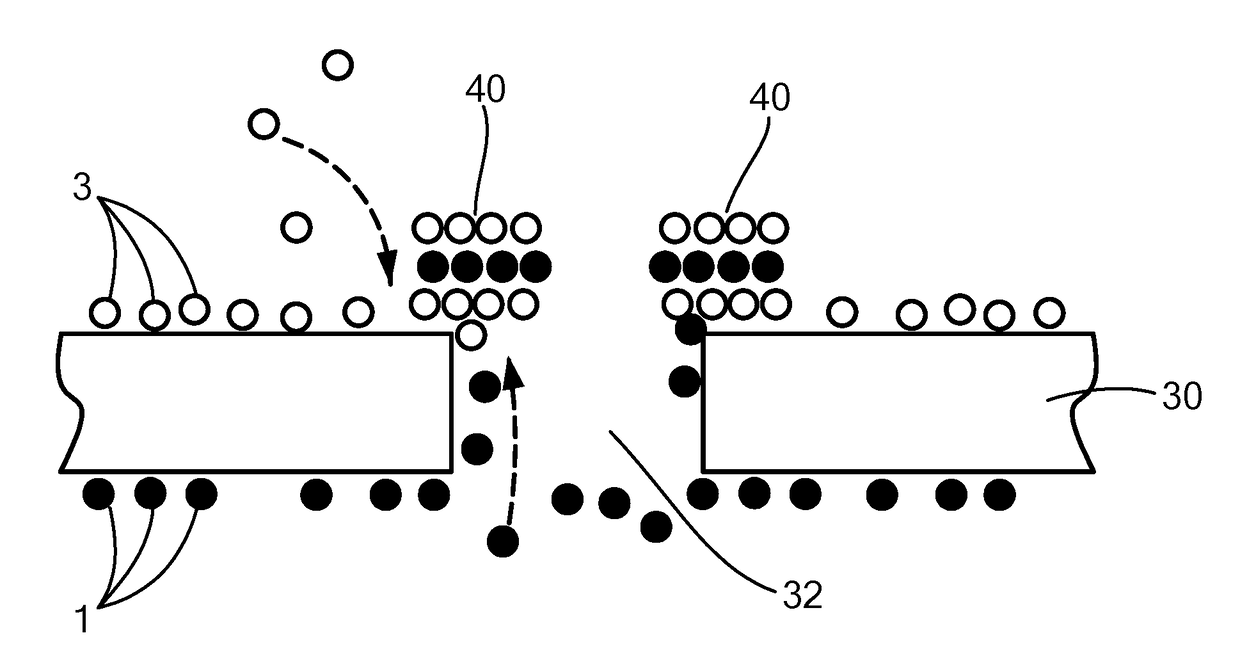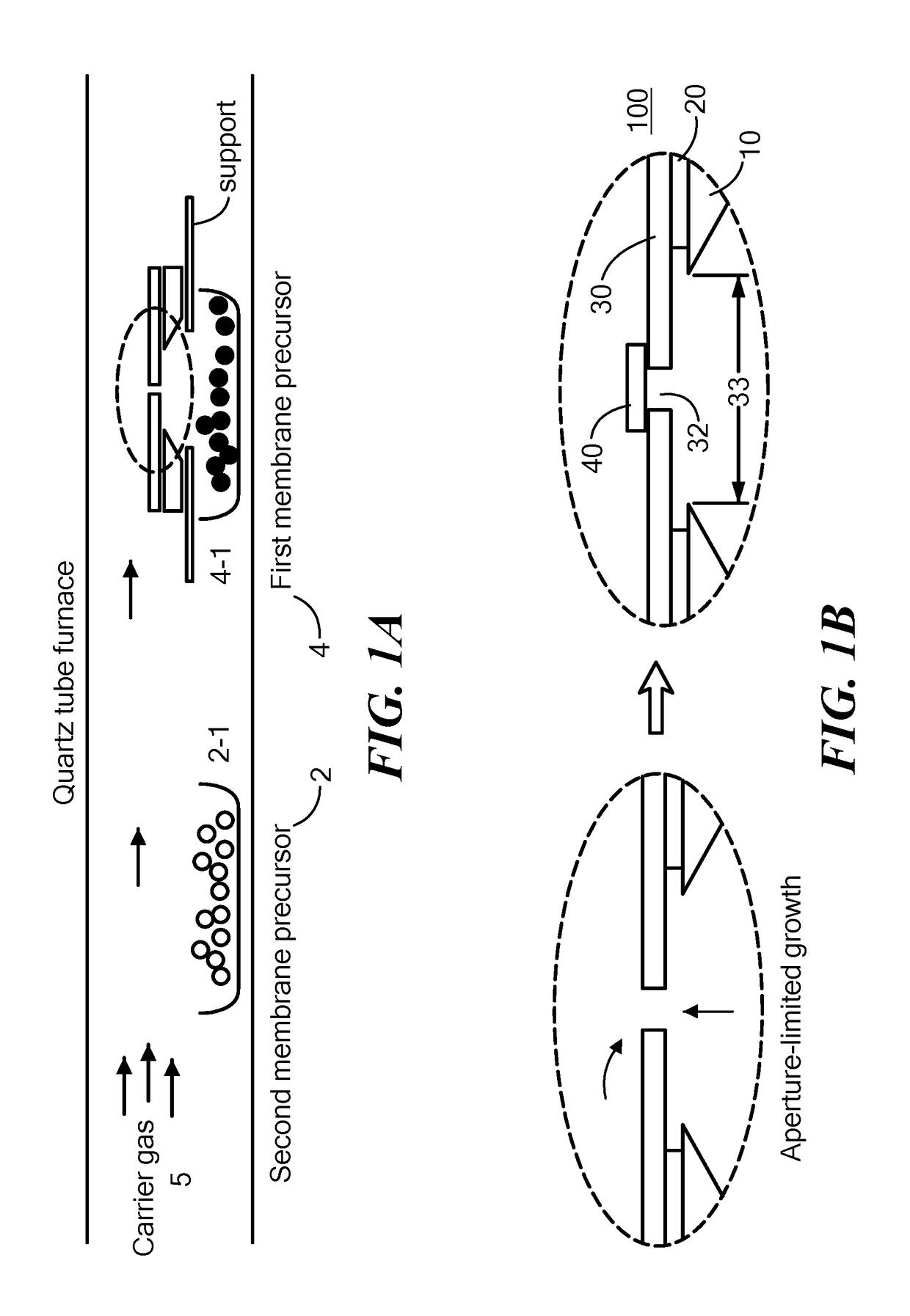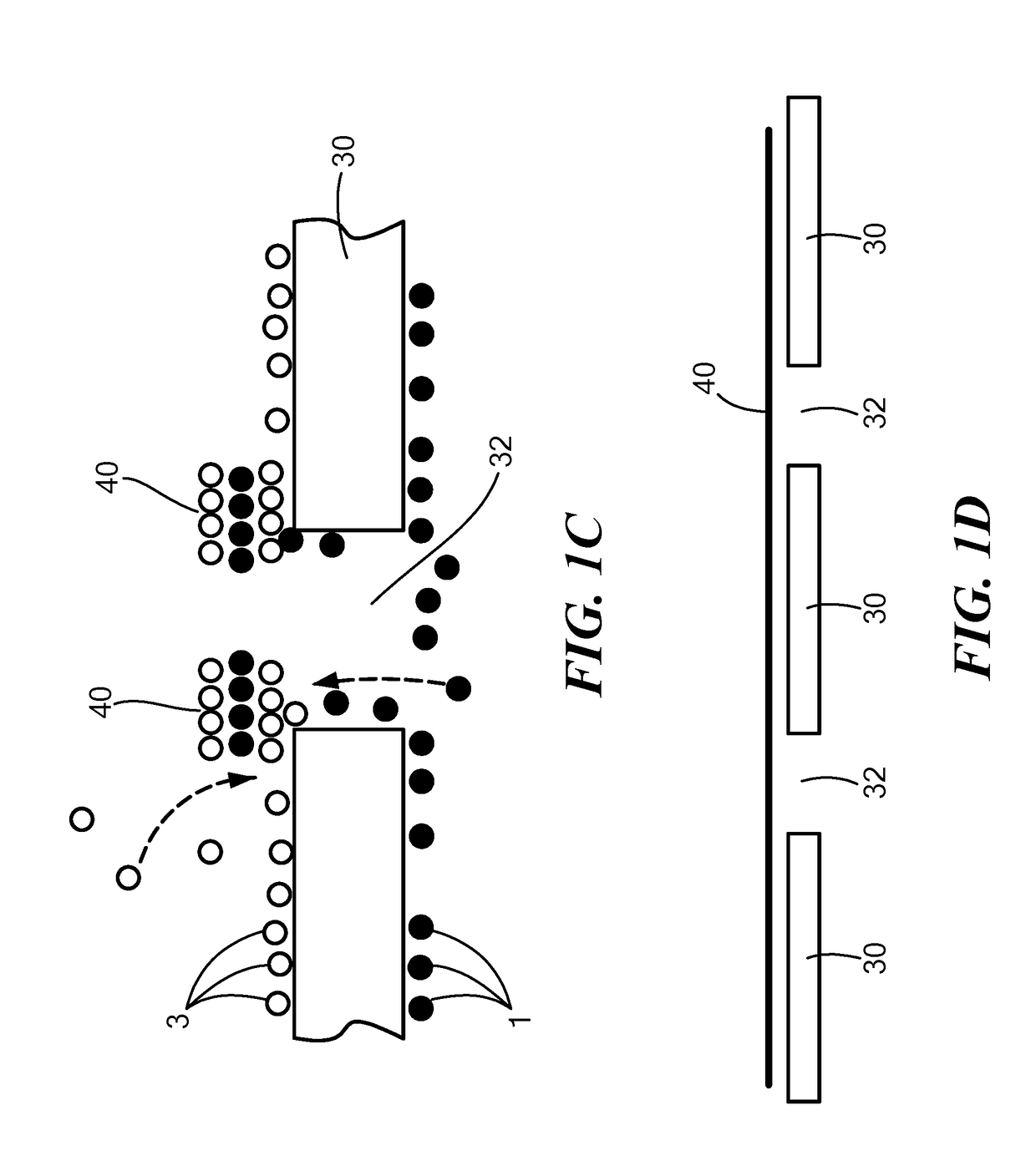Low Noise Ultrathin Freestanding Membranes Composed of Atomically-Thin 2D Materials
- Summary
- Abstract
- Description
- Claims
- Application Information
AI Technical Summary
Benefits of technology
Problems solved by technology
Method used
Image
Examples
example 1
Fabrication of Freestanding Ultrathin MoS2 Membranes
[0104]Substrates for nanopore fabrication were 5 mm×5 mm square Si chips with a 100-nm-thick SiN film deposited on a 2.5 μm thick thermal SiO2 layer. The oxide layer helps to reduce electrical noise. The SiN film was protected with a 950 PMMA etch mask, and a small (2 μm×2 μm) region with a pattern of four 600 nm-diameter holes and a central 1.5 μm diameter hole was exposed using Nabity NPGS e-beam writing software on a Hitachi S-4800 scanning electron microscope. Exposed PMMA was developed with 3:1 isopropyl alcohol and methyl isobutylketone. The SiN film was etched to AFM- and ellipsometry-calibrated thickness in a Technics Micro-RIE Series 800 etcher using sulfur hexafluoride (SF6) at 300 mTorr and 150 W. PMMA was removed using acetone, and chips were cleaned with hot piranha solution followed by warm water to remove residual PMMA.
[0105]MoS2 membranes were synthesized using an atmospheric-pressure CVD process in a split tube fur...
example 2
Structural Characterization of MoS2 Membranes.
[0107]FIG. 2A shows bright-field (BF) TEM images of freestanding MoS2 membranes synthesized, without a substrate, onto micron-scale holes prefabricated in a thin sheet of SiN. Panels (i)-(iv) of FIG. 2A show high magnification TEM images of four different MoS2 membrane devices. Some holes are partially covered with multiple layers of MoS2, which possibly could be due to the insufficient nucleation time during CVD. It is noteworthy that unintentional wrinkles could be seen in some MoS2 membranes grown across holes, which may be due to stress exerted on the membranes as they freely suspend over the free aperture (see, e.g., FIG. 2A(iii)). Different domains of monolayer and multilayer MoS2 were observed in membranes grown across submicron aperture regions.
[0108]FIG. 2B shows high resolution TEM (HRTEM) images of the MoS2 membrane analyzed in the highlighted region as depicted in FIG. 2A(i) with a dashed box. In FIG. 2B it is clear that ther...
example 3
Electrical Characterization of MoS2 Membranes Containing Nanopores
[0112]Following optimization of hole-free membrane growth, complete MoS2 membranes were grown on several devices, and a TEM beam was used to fabricate nanopores in these membranes in order to study ion transport through the pores.
[0113]Because of the extremely thin membrane structure, only brief (about 1-2 sec) exposure times using a focused beam were sufficient to produce nanopores; great care was taken to avoid large pore formation, e.g., by reduction of spot size and beam current.
[0114]Following the fabrication of several pores of different diameters, the chips were assembled into a custom-made PTFE cell as shown in FIG. 6A. Prior to obtaining measurements, a chip was glued onto the top PTFE portion of the cell using a quick-curing elastomer, and a second layer of glue was applied to the membrane such that only about 1 mm2 was exposed, in order to minimize capacitance-mediated noise. After elastomer curing, the cel...
PUM
| Property | Measurement | Unit |
|---|---|---|
| Temperature | aaaaa | aaaaa |
| Temperature | aaaaa | aaaaa |
| Time | aaaaa | aaaaa |
Abstract
Description
Claims
Application Information
 Login to View More
Login to View More - R&D
- Intellectual Property
- Life Sciences
- Materials
- Tech Scout
- Unparalleled Data Quality
- Higher Quality Content
- 60% Fewer Hallucinations
Browse by: Latest US Patents, China's latest patents, Technical Efficacy Thesaurus, Application Domain, Technology Topic, Popular Technical Reports.
© 2025 PatSnap. All rights reserved.Legal|Privacy policy|Modern Slavery Act Transparency Statement|Sitemap|About US| Contact US: help@patsnap.com



